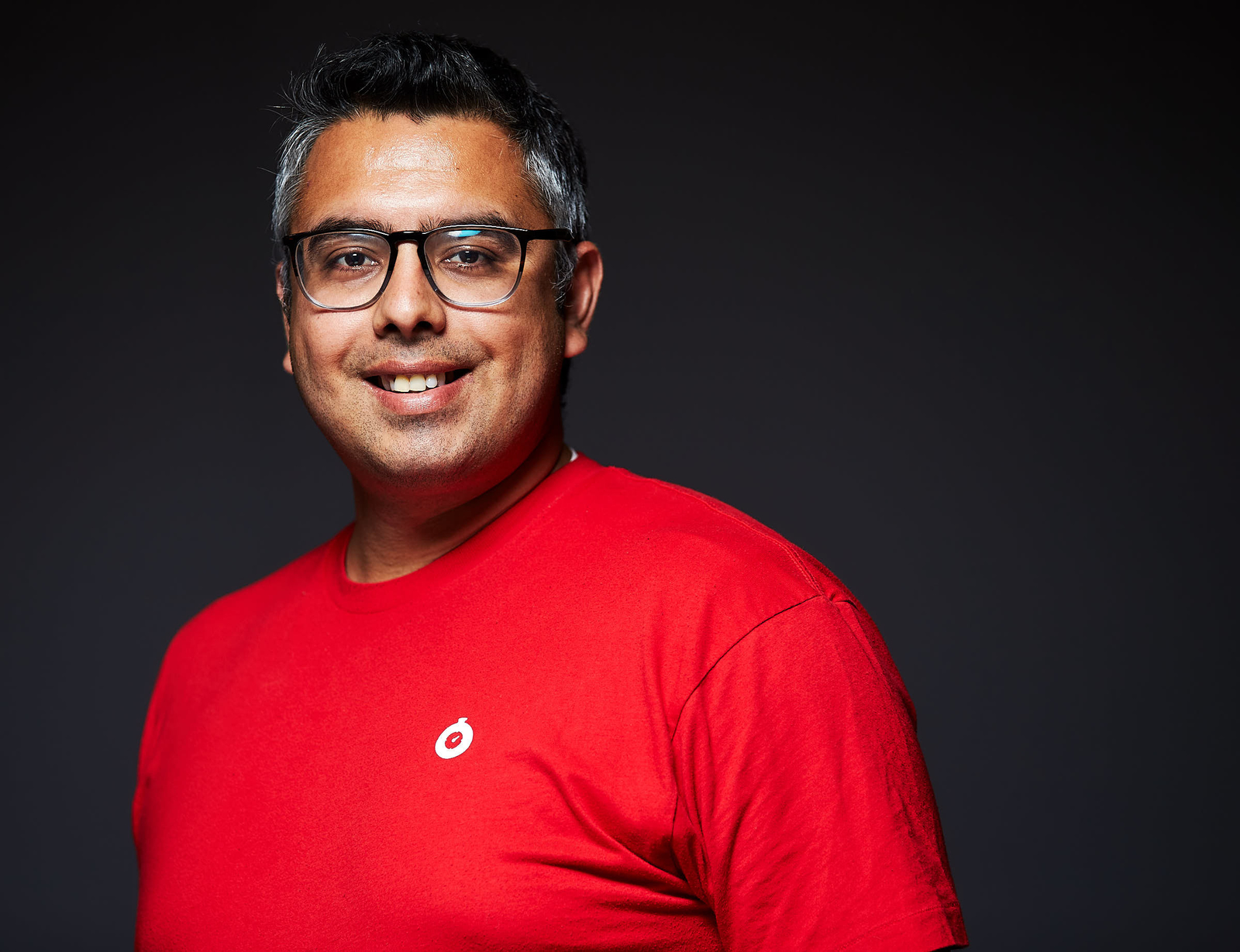The last episode of Season 4 is a hero’s journey story! Ashish Dixit (@tundal45 on Twitter) shares how he found himself managing a team of volunteers (and realized this was happening through failure), how he approached this experience, and what he learned through an accidental discovery of “oops I’m managing?”. Whether your first management days are fresh or far in the past, I hope you enjoy this humble and charming storytime.
Transcript
JENNIFER: Welcome to Storytime with Managers, a podcast by Cohere.
I’m Jennifer Tu, and I’m here with Ashish Dixit to talk about volunteering as a manager for a new code for good project. Ashish, can you tell us a little about yourself?
ASHISH: Absolutely. Talking especially about myself is like my favorite. So, I’m here.
JENNIFER: [Laughs]
ASHISH: I’m an engineer working at Fastly and I am mostly focused on API design and development for one of our security products. I’m also slowly learning, as a human being, how much of human life is interaction, connections, and how so much exists just within ourselves as long as we learn to listen to the signals instead of the noise. And I’ve been watching America’s Test Kitchen videos lately to sort of relax and shut down my brain and go to bed. And they’ve been amazing.
JENNIFER: Oh, man. Your food is already amazing. I’m sure it’s only going to get much better now.
ASHISH: Yeah, cooking is like an escape and it’s very satisfying when I get to make time for it.
JENNIFER: Yeah. So let’s talk about this. Earlier this year, you volunteered as an organizer for Ruby for Good, which is an organization that runs events where developers work on projects in collaboration with nonprofits and community organizations. Those projects are organized by attendees who volunteer as the tech lead and then they take their projects towards MVP. That was not what you did as an event organizer, because as part of your role as an event organizer, you agreed to do something different. You agreed to shepherd one of these projects from when the team lead was assigned through to the MVP. Can you share a little bit about what that experience looked like and what you ended up doing?
ASHISH: Absolutely. As an event organizer, it was my first time organizing, mostly because I had such an amazing experience the year before as an attendee that I was like, “Oh, I want to help out in any way that I can.” So I knew intellectually going in that I’m an organizer and my role is a shepherd. But like most things in life, things take a few steps for them to really sink in and those words to really reflect their meaning. So what I ended up doing initially was how I mostly do things when I’m trying to figure out something new, which is trying a bunch of stuff. So I was doing everything from running our stakeholder meetings to doing just very tactical things rather than what shepherds should do. And I think eventually I realized, “Okay, this is not sustainable.” And I am not helping or I wasn’t sure what I could be doing. But I think my team was amazing and they were able to push back and help me realize that I was doing a little bit too much.
JENNIFER: So what did you end up doing then?
ASHISH: I think it was a lot of reflecting because it was still not making sense to me. So, I had to dig a little bit deeper to get behind why am I trying to do so many things that I realized that it’s like my mode when things are uncertain, where I just latch on to something that I can control when everything feels like it’s spinning out of control. And that was mostly because it was my first time and I didn’t have a lot of context. And then we as organization, with Covid, had to do a lot of things that we had not done before. Like this used to be a synchronous three day in-person event, and so much of community interaction was ingrained into that event. And the experience we need to pivot to make it a remote event, but still trying to give people that sense of community in the process. So yeah, I think it was a lot of reflecting on what people were saying and then realizing, “Oh, my job is to just be there to support,” like the team leads and a really amazing product person who is helping us with the project. And they can just take on the project. I don’t have to worry about actually executing on it. I just have to be there to answer questions, provide support. I think that’s when I was like, “Oh, wait. Am I supposed to be doing manager-y things?”
JENNIFER: [Laughs] Yes. What did these manager-y things look like? Once you got to the point where you realized, “I am here to support the people doing the work,” what do you find yourself doing, or watching or not doing, once you figured out how to do the work you wanted to be doing?
ASHISH: I didn’t want to not show up to the stakeholder meetings because the stakeholder meetings had a lot of contexts. Our stakeholders were just amazing. I think every stakeholder meeting, I learn something new and interesting. And I was just amazed at their engagement. But what I explicitly told myself was that I shouldn’t be running these meetings and I should only talk when I can help. If I noticed that there might be some missing context, so they could just ask a question, we would uncover that context, then I would try to help out in a minimal way that way. But I mostly try to just let the team sort of guide the meetings. And even that, I think it took a couple of tries, like everything does. I think it was very much of reflecting on when I’m needed and making sure I’m needed before I just insert myself.
JENNIFER: Can you give any kind of example of a point when you were needed? Because one thing I’m thinking about is it might feel like, for someone who’s doing this the first time, that going to these meetings and not taking the active role feels almost redundant. So I’m wondering why keep going to these meetings? And what’s an example of a time when it turned out that you could support the team?
ASHISH: Yeah, I think going to the meeting for me was maybe a little bit personal in that I think that connection to the project was very important to keep me motivated. So I think some of that was just like, and I realized this, that I was going in mostly for myself. But if I hear something where I could ask or based on my experience as an engineer, I could say, like, “Okay, this requirement feels like it needs to be fleshed out a little bit. We, as a team, are going to go discuss and present some of the stuff or discuss it with ourselves and we’ll come back to our next weekly meeting and present a solution was one way that I found that I could be helpful. Even that, I think when I tried that the first time, I ended up extending the conversation when I meant to cut it and then move on to the next steps. But yeah, I think a lot of the times, my help was mostly to answer questions outside of the project execution itself, and then what existed within the Ruby for Good organization, or take things that bubbled up that I had to take back to more experienced organizers and then figure out a solution.
JENNIFER: So it might be things like how many people will work on this or what kind of servers can we run on or things like that?
ASHISH: Yeah, absolutely. I think one of the things that we had to figure out was where would these applications eventually be deployed to? And I realized that’s the kind of stuff that I can run with and then not have my team worry about that stuff so they could be focused on building. I worked with Sean, who is the co-founder, to reach out to a few people in our network and then figuring out how to get infrastructure support or sponsorship.
JENNIFER: It sounds like another thing that you did was to help the tech leads not overpromise or overcommit. Am I getting that right?
ASHISH: Yeah. And I think that was something that I personally was a little worried about. But I also wanted to let them sort of guide that and not restrict them in any way. The interesting thing is, the original plan was for us to work for most of April and then try and finish everything up. But [inaudible] team leads as amazing as they are, have been at this, still. And I think we’re right now marching to launch in August with a lot of involvement from the stakeholders who have been amazing. It’s been nice to stay committed. I frankly need to do a little bit of a better job of checking the pulse more effectively on how people are feeling. But I’m trying to at least support them in any way that I can.
JENNIFER: So how did you find that balance of when to speak up and pull back the scope and when to let the tech leads do the thing that they wanted to do?
ASHISH: I don’t know if a balance is ever found. I think it’s a lot of questions and then I think checking in with them every now and then. We did like a retro of the project after April, like sometime in May. And then that covered a few things and that at least helped me get a better sense of where everybody was. And yeah, just weekly stakeholder meetings, just seeing how our stakeholders. We have a tech lead and a product sort of person. And they’re both on it with a lot of things. I could just see that they were just on it, so I didn’t have to involve myself. So, that part was easy. Deciding when to assert myself, mostly if I sense that there’s some kind of risk. Even then, I just ask questions. In those cases, it was like, “Hey, should we worry about this or is it that an issue?”
JENNIFER: Oh, I like this about what you’re saying about asking questions. Can you say a little bit more about that? Why ask questions, and what kind of questions should you be asking?
ASHISH: I’ve always appreciated people approaching things with curiosity and letting the person who is doing the work sort of speak and provide the context. I just know that because I’m not in the thick of the everyday execution, like in a technical architecture and all that stuff, because that’s not my role in this project. I’m not the expert, so I think when I’m not the expert, my default mode is always to ask questions of who the experts are and get more context.
JENNIFER: How do you know what kind of questions to ask?
ASHISH: A lot of it is just listening. Forming a mental model and then checking with that mental model versus what I’m hearing and where the gaps are or where things aren’t, as there aren’t clear bridges between my mental model and what they’re describing. And then in those situations, I just rely on that gap to then be like, “Hey, I think I’m missing something here. I’m not seeing this connection. But that’s likely because I don’t have some missing contexts, can you tell me more?”
JENNIFER: Yeah. One thing I’m thinking about is I’m thinking about earlier when you said that you were going to these meetings, but it was more just to kind of for personal gratification. But now I’m kind of thinking about that relative to what you’re saying about understanding what other people are doing and asking questions to raise your concerns and to bring your concerns not as a ‘I have this concern’, but as a problem for the group to solve together. And now I just keep going back to this idea of attending the meetings became a lot more than just personal gratification. What do you think?
ASHISH: That’s true. I think personal gratification was more like me listening to what I guess my inner self was telling me to do. I didn’t know why it was telling me to do it. I guess that’s what following instinct looks like maybe.
JENNIFER: Oh.
ASHISH: But it’s also the recognition. I guess my previous experience where so much of my experience with the previous project that I worked on as an attendee with Ruby for Good. The Terrastories Project was about this idea of storytelling and narratives, and that was dear to my heart. And then I had experienced that that’s how I relate to everything and everyone around me. It comes in my love for books, it comes in my love for stories. So I think I knew that narratives and then context is how I form and repair connections, and I wanted to stay connected to this project. So yes, it was like gratification, but then also towards the goal of staying connected and staying present. And then I think usually both in my product development work and just in life, I think I like context because it helps me work with much richer data than relying on someone else to answer specific questions.
JENNIFER: Yeah. So it sounds like what you did was you followed your gut and stayed connected, even though you didn’t know why. And then along the way, you learned the why of why you needed to stay connected. You needed to be there to share your perspective by raising questions for the entire group to address.
ASHISH: Yup.
JENNIFER: You figured out that your job is to support the team and you figured out how you want to support the team. What’s the biggest challenge at that point?
ASHISH: For Ruby for Good, which is like a volunteer run project, I think the biggest challenge is knowing when you have time and energy for it and then matching that with everyone else’s. That can be challenging. There are days when I’m like, “Oh, I can work on this.” But it might not be like when someone else is going to work on it. So I think that’s where my current struggle is, is just finding time, like enough focus time, to help out beyond just things that are absolutely necessary for the team support. But I think another thing that also becomes hard for a long running project like this is obviously in a product role, you have a cadence of one-on-ones because that’s part of your job and that time is accounted for. Again, with volunteer time, it’s hard to schedule that time. Even if you feel the need to, people may not have the bandwidth to have that. So I think you rely a lot on sort of reading the room and then [inaudible] data to make connections and then fill in the gaps with asking questions.
JENNIFER: Do you have any advice on how to read the room when you’re remote?
ASHISH: [Chuckles] Ah, it’s a struggle. I already struggle with reading the room somewhat. [Laughs] But I think in a remote context, it’s especially hard. The only thing that works for me is just reflection and playing back the events. And then being okay with following up with someone at a later point saying like, “Hey, I’ve been reflecting on this interaction that we had. And I realized I was coming off in this way. And I want to apologize for it. I want to make sure you have this support.” Yeah, a lot of it is just like a reflection and then learning how to apologize without centering yourself and centering the other person.
JENNIFER: You say the word reflection and it sounds so short and simple, but I don’t know, I just get the sense that it might be a much more involved process than taking a couple of seconds to think. Do you mind breaking into that a little bit and talking about how you reflect and what you do to get from where you are before the reflections you’re after?
ASHISH: Yeah, reflection for me is more involved. And it might be just by nature, I overthink things a little bit. And I’ve just accepted it and I’ve learned to notice when I’m over thinking too much and put a stop to it. But I just look back as to what happened, and then I try and think about [inaudible] obviously much richer data on how I’m responding and what I’m feeling and less on other people. But that’s still data. If I had limited data on the other person and what they might be responding to, that means I was not being present. So, that’s a cue for me to be like, “Okay. I was not present in that conversation. Why was that? Was I too tired or was I defensive?” And then it’s just being curious about stuff like that. Like what need in me was not met that led to this or what need in the other person was not met that I was not able to recognize in the moment that led them to act in that way. So, it’s a lot of like that.
JENNIFER: Wow. I really like that. So what you’re doing is you are thinking about what the other person must have been saying and thinking and feeling. And if you don’t know the answer, then that becomes a sign to yourself that you need to pay more attention to the other person. Oh, that’s really cool.
ASHISH: Absolutely. Yeah.
JENNIFER: All right. Ashish, unfortunately, this is all the time we have for today. Do you have any final words of advice for our listeners?
ASHISH: Yeah, it might sound like this was linear and things were learned and then immediately applied. But I think everyone knows that application of these lessons is practice and then constant tweaking. So yeah, if you try doing some of this, it’s hard initially, it’s hard still. It’s just like lifelong practice. But I think my therapist, as she constantly tells me, is just be gentle with yourself and be curious about feelings even if they are hard feelings.
JENNIFER: Thank you. Ashish, if people want to continue this conversation, what’s the best way for them to reach you?
ASHISH: I’m trying not to check Twitter [laughs] as much as possible, but I also don’t have a better answer than Twitter. I’m tundal45 wherever on social media - GitHub, Twitter, Instagram and wherever I can find that username.
JENNIFER: All right, super. Thanks so much for being here today.
ASHISH: Thank you for having me.
JENNIFER: Thanks for listening to Storytime with Managers by Cohere. I’m Jennifer Tu. Our theme music is by Kevin MacLeod, and we are edited by Mandy Moore and the DevReps crew.
If you like this episode, please think about leaving us a review on your favorite podcast listening platform. This can make a really big difference in helping other people find and start listening to Storytime with Managers. Thanks so much.



